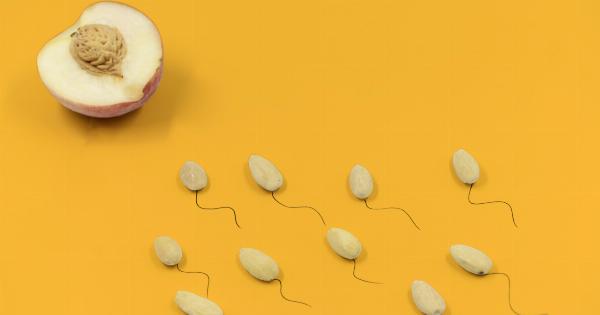As a man, your sperm health is crucial not only for your fertility but also for your overall well-being.
If you are planning to start a family or wondering about the health of your sperm, there are various ways to determine if your sperm is healthy or not. In this article, we will discuss the most essential tips on how to tell if your sperm is healthy or not.
Why Sperm Health Matters
Before we delve into the indicators of healthy sperm, let us understand why sperm health matters. Your sperm health determines your fertility level. Sperm health affects the success of fertilization and conception.
The healthier your sperm, the better the chances of successful fertilization and conception.
Sperm health also reflects your overall well-being. Poor sperm health indicates that you might have an underlying health issue that needs medical attention. Therefore, it is imperative to keep your sperm health in check regularly.
What Makes Sperm Healthy?
Healthy sperm is characterized by sufficient quantity, quality, motility, and morphology. The quantity of sperm refers to the number of sperm in a particular ejaculate.
A man’s sperm count is considered within the healthy range if it contains at least 15 million sperm per milliliter of semen. Sperm quality refers to how well the sperm can fertilize an egg. Quality is determined by the shape and size of sperm. A high percentage of normal-shaped sperm is essential for healthy sperm quality.
The motility of sperm refers to the ability of sperm to swim and move towards an egg for fertilization. The higher the motility, the better the chances of conception. Sperm morphology refers to the shape, size, and structure of sperm.
The healthier the morphology, the higher the chances of successful fertilization and conception.
Indicators of Healthy Sperm
High Sperm Count
A high sperm count indicates a good quantity of sperm in your ejaculate volume. As mentioned earlier, the healthy range for sperm count is at least 15 million sperm per milliliter of semen.
You can determine your sperm count through a simple semen analysis test. A semen analysis test is usually done in a laboratory.
Good Sperm Motility
Good sperm motility means that sperm can swim and move adequately. It is vital for effective fertilization. If the sperm lacks proper motility, it would not be able to reach the egg and fertilize it, which eventually leads to infertility.
A man can determine the motility of his sperm through a semen analysis test.
Healthy Sperm Morphology
A healthy sperm morphology means that sperm is shaped and sized correctly. Good sperm morphology maximizes the chances of successful fertilization. A high percentage of normal-shaped sperm is essential for good sperm morphology.
A semen analysis test can determine the sperm morphology.
Normal Semen Volume
Semen volume is the amount of fluid ejaculated during ejaculation. Normal semen volume ranges from 1.5 to 5 milliliters per ejaculation. The semen volume is essential because it helps the sperm to swim and reach the egg.
Abnormal semen volume may lead to infertility.
Good Age Range
Sperm health is often affected by age. Men over 40 years old have a lower chance of successful fertilization than younger men. Sperm quality is known to decrease with age, leading to decreased fertility.
Therefore, it is recommended that you start family planning early to avoid age-related fertility issues.
Avoiding Sperm Damage
Various factors can cause damage to sperm, leading to decreased fertility. To maintain healthy sperm, you should avoid habits that can damage your sperm, such as smoking, drinking alcohol excessively, and drug abuse.
Exposure to environmental toxins such as pesticides, lead, and certain chemicals may also harm your sperm. Therefore, it is recommended that you minimize exposure to such toxins to maintain healthy sperm.
Conclusion
Sperm health plays a critical role in male fertility and overall well-being. A healthy sperm count, good sperm motility and morphology, normal semen volume, and age range are essential indicators of healthy sperm.
To maintain healthy sperm, you should avoid practices that can damage your sperm, such as smoking, alcohol, and drug abuse. Lastly, it is recommended that you regularly consult with your healthcare provider to determine your sperm health and address any issues related to the same.





























